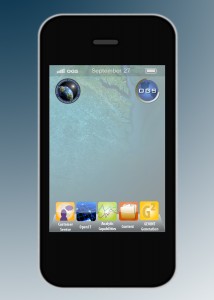NGA stands by its plan
The National Geospatial-Intelligence Agency’s online apps initiative has raised eyebrows in the intelligence community for lots of reasons. There are the technical challenges of installing and maintaining an apps store on unclassified, secret and top-secret networks. There's the business challenge of convincing software developers they won't go broke in a world of online apps.
Eyebrows have raised the highest, though, over this point: NGA has set a goal of approving the new apps within two weeks of submission to the agency, a la Apple’s apps store.
NGA officials announced the two-week goal during an industry day in September at its Campus East facility in Springfield, Va. Ever since, executives have quietly wondered about the feasibility of a government agency doing anything quite so fast, especially when lawyers are involved.
In an interview with Deep Dive, Applications Services Director Mark Riccio said NGA stands by its plan.
True, he said, app reviewers face lots of security and legal considerations, including software licensing, trademark and copyrights issues. Achieving a thumbs-up or down in two weeks will require spelling out in advance the precise information NGA would need.
“That should allow for a rapid approval of these apps. It’s a goal that we’ve laid out. It’s a goal that we’re confident we can meet. And we’re challenging ourselves to meet that,” Riccio said.
The agency is aiming for user friendliness in the submission paperwork. The forms must be “as simple and as straight forward as possible” so that “a lot of the pre-coordination activity will already have taken place,” he said.
The next major milestone in the apps initiative will come sometime between January and March. That’s when NGA plans to release a document spelling out “the mechanism by which the development community out there -- large businesses, small businesses, academia -- will be able to provide us apps and then be compensated in turn for those applications should they be chosen for hosting within our apps store,” Riccio said.
NGA has apps today but they were made by NGA or submitted by other agencies or government organizations. There are about 150, Director Letitia Long said in October at the annual GEOINT Symposium. NGA wants up to thousands of apps to be available for analysts at NGA and elsewhere in the community. To get there, it’s trying to light a fire in the software industry. Companies would be paid based on the performance of the apps and their popularity among analysts. The apps would be used by analysts equipped with iPhones, iPads and Android devices approved for use in secure facilities.
The GEOINT Apps Store is up and running on the intelligence community’s unclassified network and on the top secret Joint Worldwide Intelligence Communications System called JWICS.
Riccio said the store should be available shortly where most analysts work -- on the Secret Internet Protocol Router Network, or SIPRNET. “As in any development, we’re just going through the final checks on our end to make sure that it’s going to provide the best user experience possible,” he said.




You can get some sense of what NGA’s app store looks like and some of the things their trying to do by looking at the function and data type of what is mostly domestic support.
https://apps.nga.mil/
Government app stores like GSA’s seem like a mixed bag but this is a first for an intelligence agency to at least expose the existence of unclassified apps. Bringing in small business and individual developers to compete against big Beltway companies that know how to navigate the government contracting seas will be tough but you have to start somewhere and some transparency is better than nothing.